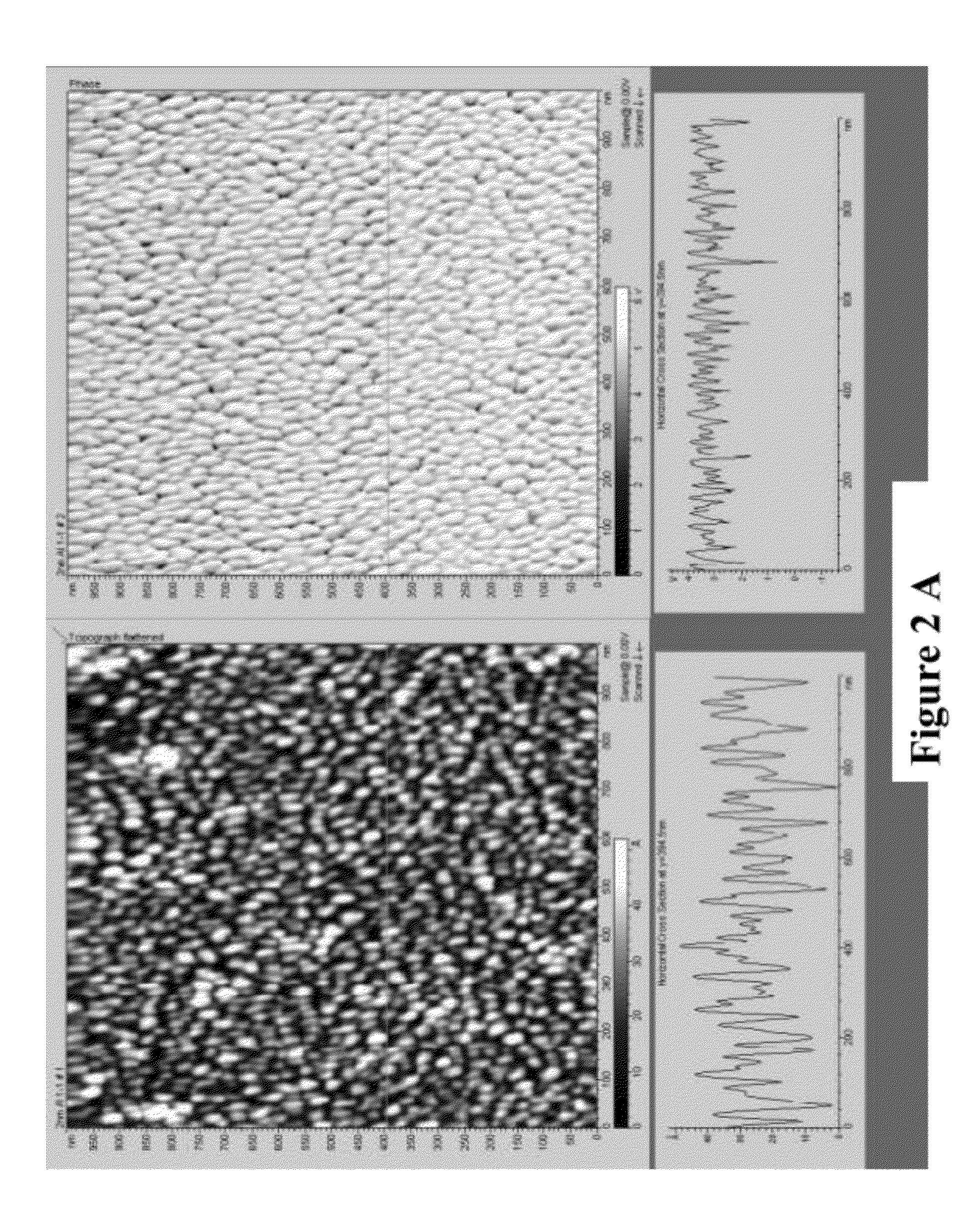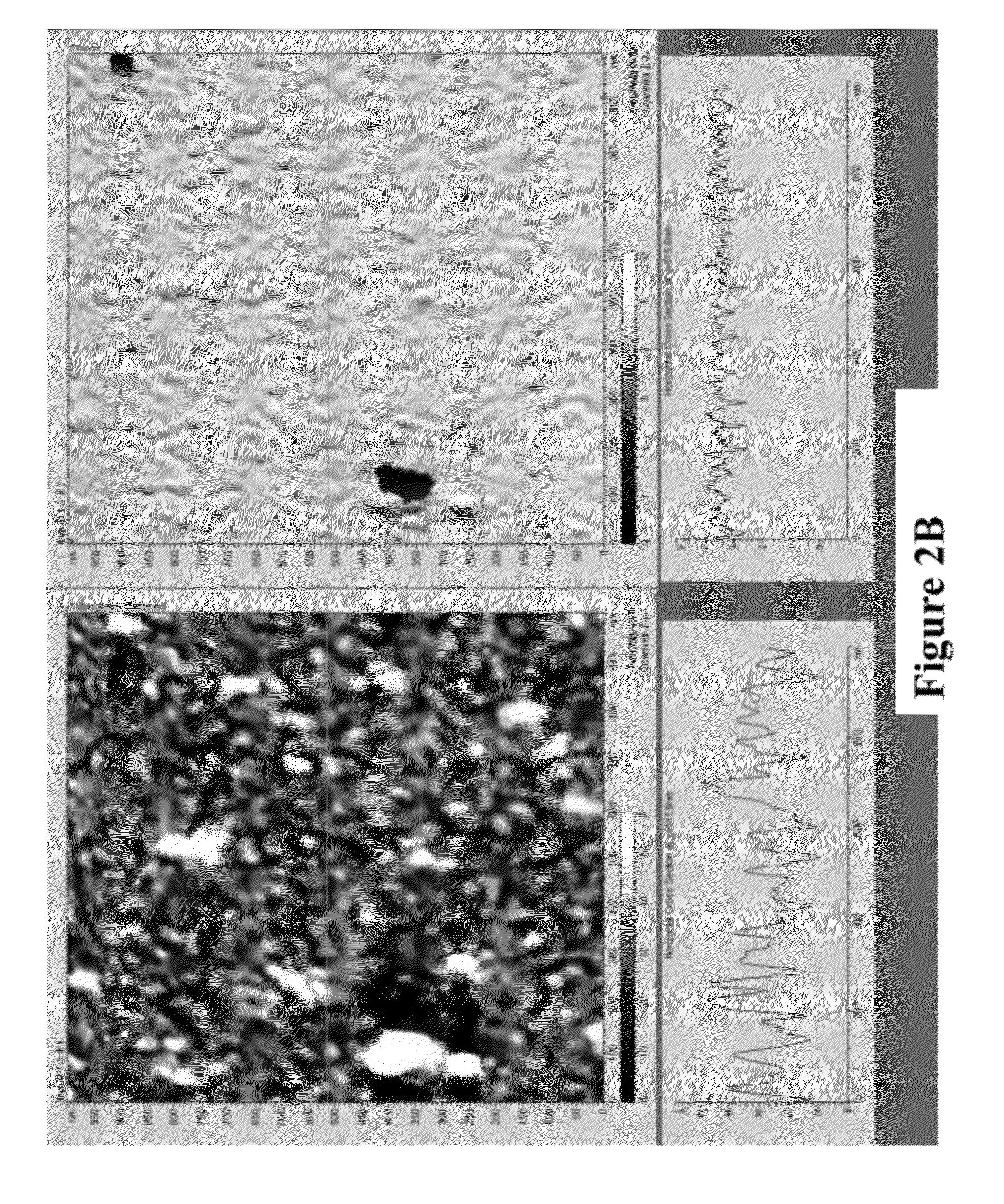Mixed-metal substrates for metal-enhanced fluorescence
- Summary
- Abstract
- Description
- Claims
- Application Information
AI Technical Summary
Benefits of technology
Problems solved by technology
Method used
Image
Examples
examples
Materials and Methods
[0115]Materials. Toluene, Fluorescein, Rose Bengal, N-acetyl-tryptophan-amid (NATA) and Phenylalanine (Phe), were purchased from Sigma. The concentration of NATA and Phe were determined by measuring the optical density of the solutions using extinction coefficients of E280=5,300 M−1 cm−1 and E257=195 M−1 cm−1, respectively (26; 27). Bovine serum albumin (BSA) was purchased from Sigma. To determine the concentration of the protein in solutions, an extinction coefficient of E280=43,824 M−1 cm−1 was used. Aluminum wire, 99% pure, for thermal vapor deposition onto glass slides was purchased from the Kurt J. Lesker Company, Material Group (Clairton, Pa.). Chromophores, including amino acids and protein, BSA, were dissolved in TE buffer, pH 7.4.
[0116]Measurements of absorption and fluorescence. Absorption spectra of the fluorophores, protein intrinsic chromophores and BSA were measured using a Varian Spectrophotometer in quartz B7 1-cm path-length cuvettes. Fluorescen...
PUM
 Login to View More
Login to View More Abstract
Description
Claims
Application Information
 Login to View More
Login to View More - R&D
- Intellectual Property
- Life Sciences
- Materials
- Tech Scout
- Unparalleled Data Quality
- Higher Quality Content
- 60% Fewer Hallucinations
Browse by: Latest US Patents, China's latest patents, Technical Efficacy Thesaurus, Application Domain, Technology Topic, Popular Technical Reports.
© 2025 PatSnap. All rights reserved.Legal|Privacy policy|Modern Slavery Act Transparency Statement|Sitemap|About US| Contact US: help@patsnap.com



